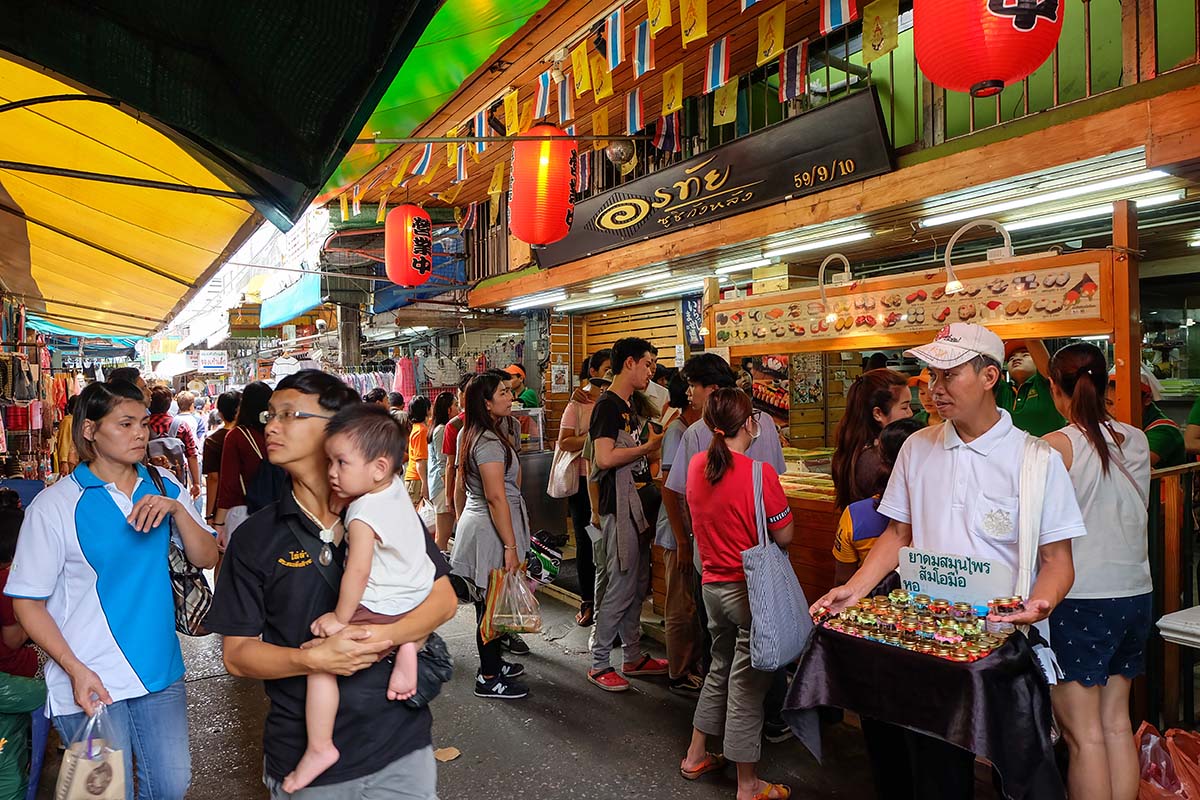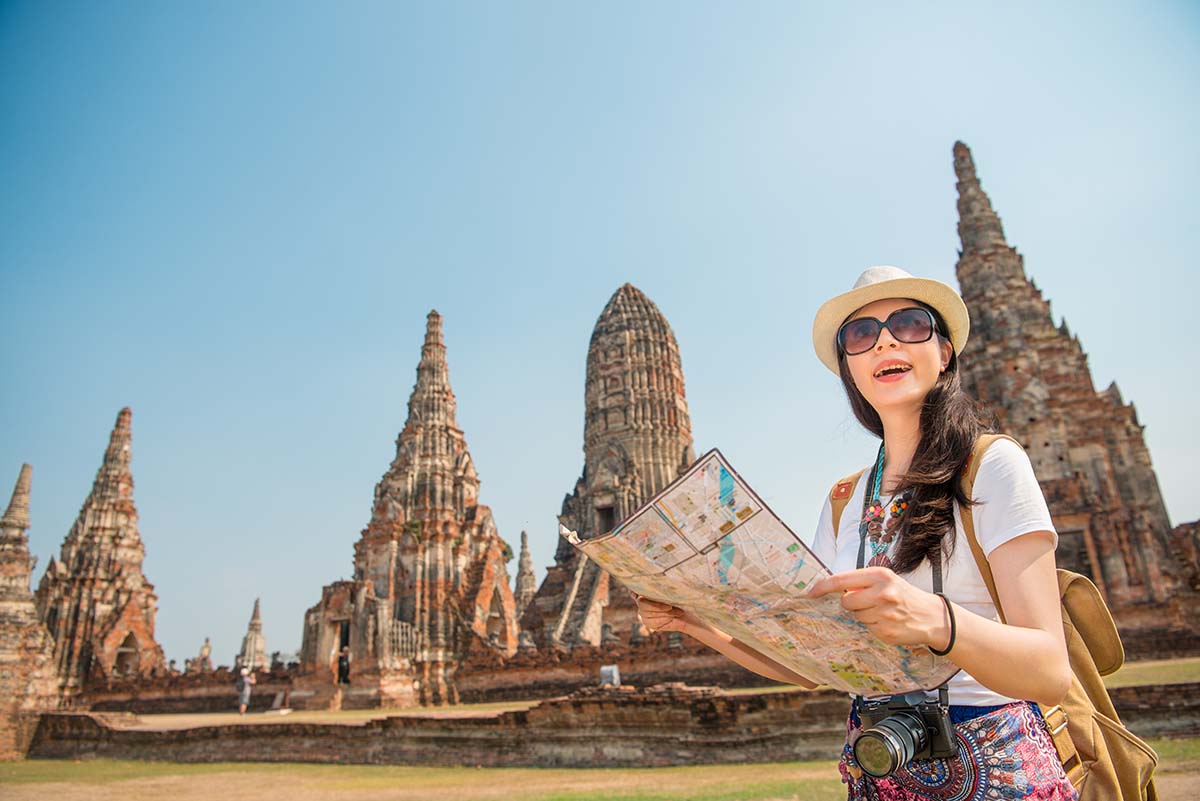The relationship between Japan and Thailand goes way beyond formal handshakes and official treaties. It’s a dynamic narrative of two cultures flowing together in elegance and ease, alike. Over the years, both countries have embraced parts of each other’s daily life, philosophy, and aesthetic, creating a rich story of exchange, with chapters that date to the late 1800s.
This factsheet highlights 12 vibrant aspects of the Japan–Thailand bond — spanning food and fashion, to education and environment — with a lifestyle lens that reveals just how much these two cultures complement one another.
1. A Century-Long Friendship: Foundations of Mutual Respect
This is no diplomatic fling — Japan and Thailand’s friendship goes way back. It all began officially in 1887, and since then, the two have shared a steady, respectful, and warm partnership. From formal treaties to cultural events, this relationship is built on more than paperwork — it’s about values, vision, and shared global goals.
QUICK FACTS : Diplomatic Milestones
• First treaty inked in 1887
• 135th anniversary celebrated in 2022 with a splash of cultural events and exchanges
2. Culinary Crossroads: A Fusion of Flavors
Whether you’re a sushi purist or a tom yum aficionado, Japan and Thailand have created a flavor-filled dialogue on the plate. Japanese cuisine’s clean, umami-rich vibes have found fans across Thailand, while Thailand’s fiery, herb-packed dishes are a hit in Japanese kitchens. Forget about mere culinary fusion — this is a full-on culinary friendship.
QUICK FACTS : Culinary Highlights
• Nearly 6,000 Japanese restaurants in Thailand (as of 2025)
• Thai cuisine ranks among the most loved international foods in Japan
3. Cultural Festivals: Celebrating Shared Traditions
Festivals are where the magic happens — and Japan and Thailand have made these cultural celebrations truly cross-border. Think: music, dance, crafts, and of course, street food. Whether it’s Yoyogi Park turning Thai for a weekend, or Bangkok getting a splash of Japan, these fests are pure cultural chemistry.
QUICK FACTS : Festival Details
• Thai Festival Tokyo, held yearly at Tokyo’s iconic Yoyogi Park, is a highly anticipated event, in collaboration with the Embassy of Thailand in Japan
• Japan Expo Thailand is an annual staple in Bangkok
4. Fashion Fusion: A Blend of Styles
From minimalist Japanese streetwear to the luxurious textures of Thai silk, these two style worlds are finding chic ways to meet in the middle. Cultural events in Bangkok, like the Bon Odori Festival and exhibitions such as “KIMONO—Japanese Traditional Performing Arts Meet Thai Silk”, showcase traditional Japanese attire and textile craftsmanship, including creative blends of kimono and Thai silk. Meanwhile, Japanese designers continue to draw inspiration from Southeast Asia’s rich textile heritage, bringing new texture and tradition to the runway.
QUICK FACTS : Fashion Collaborations
• Bangkok regularly hosts Japanese cultural events featuring kimono, such as the Bon Odori Festival and the “Kimono meets Thai Silk” exhibition at BACC
• Thai silk is increasingly featured in Japanese fashion exhibitions and textile collaborations
5. Educational Exchanges: Building Bridges Through Learning
When it comes to learning, both nations are serious — and seriously collaborative. Japan’s prestigious Kosen engineering education system, known for its hands-on, innovation-driven approach, has taken root in Thailand as part of the country’s push toward “Thailand 4.0.” Starting at age 15, the five-year Kosen curriculum focuses on developing practical, high-level engineers — a perfect fit for Thailand’s next-gen industrial goals. The first Kosen-style technical college, KOSEN-KMITL, was established at King Mongkut’s Institute of Technology Ladkrabang in 2019, followed by KOSEN-KMUTT. Student exchange programs continue to thrive as well, connecting classrooms, campuses, and futures across borders.
QUICK FACTS : Educational Initiatives
• Kosen engineering education system introduced in Thailand, with colleges at KMITL and KMUTT
• A wide range of student exchange programs connect Thai and Japanese institutions
6. Tourism Ties: Exploring Each Other’s Heritage
Wanderlust runs both ways. Japanese travelers head to Thailand for temples, beaches, and culinary thrills, while Thai tourists are discovering Japan’s serene countryside and deep cultural roots. This exchange encompasses far more than sightseeing — it’s soul-searching across borders.
QUICK FACTS : Tourism Statistics
• In the first 11 months of 2024, more than 1 million Thai travelers visited Japan — a 15.2% increase compared to the same period the previous year. This surge made Thailand the sixth-largest source market for foreign arrivals to Japan, according to Nation Thailand.
• As of August 2024, the number of Japanese visiting Thailand reached 668,221. In January and February 2025, a total of 207,571 Japanese tourists had visited Thailand.
7. Cultural Exchange Programs: Immersive Experiences
Want to roll sushi in Kyoto or sip tea in Chiang Mai? These immersive programs go beyond surface-level tourism, inviting people to live and breathe each other’s cultures. From traditional arts to everyday rituals, participants walk away with more than memories — they leave with real connection.
QUICK FACTS : Program Highlights
• OCA (Off Campus Activities) Japan-Thailand Exchange Project started way back in 1971
• Thai-Japan Cultural Exchange features hands-on activities like tea ceremonies, sushi making, and visits to heritage cities
8. Sports Diplomacy: Promoting Camaraderie
Sports aren’t just about scores — they’re about spirit. Through training camps, friendly matches, and shared skills, athletes from Japan and Thailand continue to bond on and off the field. It’s a powerful reminder that teamwork transcends borders.
QUICK FACTS : Sports Initiatives
• Regular joint training sessions between Thai and Japanese athletes
• Friendly matches serve as symbols of bilateral sportsmanship
Where ikigai meets sabai sabai, there’s a future built on balance, beauty, and mutual respect.
9. Artistic Alliances: Showcasing Creative Expressions
From dramatic Kabuki to vibrant Thai contemporary art, the creative exchange between Japan and Thailand is alive and thriving. Art exhibitions, performances, and workshops are turning heads and bridging hearts, highlighting both heritage and modern vision.
QUICK FACTS : Art Collaborations
• Kabuki has graced stages in Bangkok
• Thai artists and exhibitions are welcomed in Japan regularly
10. Technological Synergy: Innovating Together
Think smart tech, think Japan and Thailand together. From robots and EVs to infrastructure development utilizing Japanese technology, both nations are pushing the boundaries of innovation — and doing it hand-in-hand. This partnership is not just futuristic — it’s future-proof.
QUICK FACTS : Tech Partnerships
• Active collaborations in robotics and automation
• Joint ventures pushing forward the automotive industry
11. Environmental Cooperation: Sustaining the Future
Green is the new gold — and both Japan and Thailand are investing in a cleaner, more sustainable world. Their joint environmental projects tackle everything from conservation to renewable practices, showing shared commitment to a healthier planet.
QUICK FACTS : Environmental Initiatives
• Collaborative environmental conservation efforts in action
• Joint sustainability projects promote eco-friendly practices
Thai communities in Japan and Japanese communities in Thailand bring everyday warmth, authenticity, and cultural richness that go far beyond official agreements.
12. People-to-People Connections: Strengthening Bonds
Want to know what’s at the heart of this dynamic relationship? It’s who’s at the heart, really! The people. Thai communities in Japan and Japanese communities in Thailand bring everyday warmth, authenticity, and cultural richness that go far beyond official agreements. This is the essence of friendship between two countries, lived and loved in real time.
QUICK FACTS : Community Engagement
• Active Japanese communities thriving across Thailand, rooted in Japanese migration to the country
• Thai diaspora bringing their culture to Japanese neighborhoods
The bond between Thailand and Japan cements far more than a diplomatic relationship — it seals a solid lifestyle synergy. From noodles and robots to art and environment, Japan and Thailand have cultivated a partnership that’s inspiring, multi-layered, and deeply human. Where ikigai meets sabai sabai, there’s a future built on balance, beauty, and mutual respect.






